Table of contents
Dried wild garlic ( Allium ursinum) is used as a spice ( organic) for soups and sauces or in salads. The wild plant, also known as wild garlic, wild garlic or dog garlic, also has a calming effect on stomach and intestinal complaints.
Use in the kitchen
Wild garlic is well known as a vegetable, spice and medicinal plant. The entire plant is edible, but the wild garlic leaves are mainly used. When the raw leaves are young and small, they taste very tender. When wild garlic is in bloom, the leaves are usually a little firmer.
What to do with dried wild garlic? Dried wild garlic is a spice that refines many recipes, e.g. raw food creations, soups, salads, dips or vegan cream cheese. How can I use dried wild garlic? It is also suitable for recipes for making wild garlic hummus, wild garlic gnocchi, vegan wild garlic butter or the popular wild garlic pesto. Wild garlic salt also works excellently with dried wild garlic.
Vegan recipe for wild garlic butter
Ingredients: 100 ml cold-pressed rapeseed oil, 40 g dried wild garlic (organic), 150 g vegetable margarine, ½ teaspoon salt, depending on preference 1 teaspoon mustard or lemon juice.
Preparation: Put the oil, wild garlic, salt, mustard or lemon juice in a tall blender and mix with a hand blender. Gradually add the vegetable margarine at room temperature and puree to a creamy mass. Fill the vegan wild garlic butter into screw-top jars and leave to cool in the fridge for several hours.
For a quick version, you can mix a pack (250 g) of vegetable margarine with 40 g of dried wild garlic leaves and a teaspoon of salt with a fork. The vegan wild garlic butter is then left to sit in the fridge for a few hours.
Vegan recipe for wild garlic soup
Ingredients: 1 onion, 3 large potatoes, 1 L vegan vegetable stock, 40 g dried wild garlic (organic), 1 cup vegan sour cream, salt, pepper, a pinch of nutmeg, 1 tbsp lemon juice, 1 tbsp yeast flakes (optional).
Preparation: Gently sauté a finely chopped onion and deglaze with a liter of vegan vegetable stock. Add the cubes of three large, peeled potatoes and cook for about 15 minutes until soft. Let 40 g of dried wild garlic (organic) steep in the soup for a few minutes. Then puree everything together with a cup of vegan sour cream or vegan sour cream (sour cream) until creamy and season with salt,pepper, a pinch of nutmeg, a tablespoon of lemon juice and optionally with a tablespoon of yeast flakes. The soup is designed for four portions.
Vegan recipes with dried wild garlic can be found under the note: " Recipes that have the most of this ingredient ".
| Not only vegans or vegetarians should read this: Vegans often eat unhealthily. Avoidable nutritional mistakes. |
Purchasing - Storage
Dried and chopped wild garlic is available as a single-variety product. You can find the herb in many well-stocked organic shops, delicatessens or supermarket chains such as Coop, Migros, Denner, Volg, Spar, Aldi, Lidl, Rewe, Billa, Edeka or Hofer. You can also easily buy dried wild garlic in organic supermarkets ( Alnatura, Denn's) or online.
When buying wild garlic leaves, give preference to organically grown wild garlic. Raw food quality (raw quality) is limited, as the leaves have a high water content. Natural drying is therefore not ideal. Common drying temperatures for gentle drying are between 40 and 50 °C. In addition, freeze-drying plays a minor role in the organic sector. 9
The availability of dried wild garlic varies depending on the size of the store, catchment area, etc. Our recorded food prices for the DA-CH countries can be found above under the ingredient image - and by clicking on them you can see their development at various suppliers.
Storage tips
Dried wild garlic leaves should be stored as a spice, protected from light and in a container that can be closed tightly. Care should be taken to ensure that no hot steam gets into the leaves when cooking. This will prevent the formation of toxic mold.
Wild
garlic is found mainly in damp alluvial forests, beech, deciduous and mixed forests, but also in hedges throughout Europe. Wild garlic grows as a carpet-forming perennial with elliptical leaves up to 28 cm long and white, star-shaped flowers (in round umbels). The umbels rise above the foliage of the plant in late spring and early summer. 1 It is best to pick in fields that are a little way off the path to avoid possible contamination from dogs walking.
When is wild garlic season? The season is between March and May, the bulbs can be dug up in the autumn and used as well. 2,3
It should be noted that if you are not familiar with it, there is a particular risk of confusion with the poisonous leaves of the lily of the valley. 2 However, the lily of the valley "twist" out of the ground and the leaves (when young) are not so tender. It can also be easily confused with the deadly poisonous leaves of the autumn crocus. 3 See also "risk of confusion" below.
When is wild garlic poisonous? And can you still harvest it after it has flowered or not? No part of the wild garlic plant is poisonous at any time of the year. Nevertheless, the young, tender leaves in spring are preferred because they have a pleasant garlic-like aroma. After the flowering period, the leaves lose their characteristic taste and are more bitter and fibrous.
Ingredients - Nutritional values - Calories
Here we realistically show you the ingredients of spices and herbs per 1 g (instead of per 100 g as usual).
Dried wild garlic is low in calories at 0.29 kcal/1g, contains 0.48 g of carbohydrates /1g, 0.3 g of proteins/1g and 0.05 g of fat/1g. Vitamin K, folate and vitamin C are the most important essential nutrients that dried wild garlic offers. 4 However, because the amount consumed is so small, they and the macronutrients do not contribute significantly to meeting the daily requirement. Far more important for the health value are the secondary plant substances in this ingredient, which can have an effect even in trace amounts. Although all herbs and spices contain many health-promoting ingredients, we have deliberately avoided the insubstantial buzzword "superfood" here.
The main components of dried wild garlic leaves are leek oil, flavonoids (prostaglandins A, B and F), biocatalysts, fructosans and lots of vitamin C. Dried wild garlic also contains about 0.07% allicin in the leaves.
The complete ingredients of wild garlic (dried), the coverage of the daily requirement and comparison values with other ingredients can be found in our nutrient tables. In the article Nutrients explained you will get a detailed insight into the topic.
Effects on health
Is wild garlic healthy? In terms of health, wild garlic has a similarly positive effect on the human body as garlic. Due to its antibacterial properties, dog garlic is used successfully for stomach and intestinal complaints such as bloating and flatulence. It is blood-purifying, anti-inflammatory, diuretic, expectorant, metabolism-stimulating, appetite-stimulating and generally strengthening and tonic. Wild garlic can also be used to prevent heart attacks, strokes and arteriosclerosis, as the plant lowers blood pressure and cholesterol. 5
Like garlic, wild garlic is considered a very healthy food. Nevertheless, we think the term superfood is exaggerated.
Dangers - Intolerances - Side effects
When collecting wild animals, there is a risk of transmitting eggs of the dangerous "small fox tapeworm", which is transmitted primarily by red foxes, but also by some cats and dogs. The eggs are found in the animals' feces and enter the body when they eat wild garlic leaves, for example. This can lead to a dangerous, sometimes fatal liver disease (alveolar echinococcosis).
Danger of confusion
If you are not aware of this, there is a particular danger of poisoning and confusion with the poisonous leaves of the autumn crocus ( Colchicum autumnale). All parts of the autumn crocus plant contain a known cell poison ("colch...") which can withstand high temperatures. If symptoms appear after 6-12 hours, such as burning and scratching in the throat, difficulty swallowing, shortness of breath, vomiting and diarrhea combined with severe fluid loss, we recommend that you see a doctor. If you eat large quantities (in the case of the leaves, about a small portion of salad) or misuse parts of the plant, death can occur if the symptoms are not treated. Symptoms of poisoning can also occur with smaller amounts. 8 The active ingredient is also used in medications used to treat gout. In adults, acute symptoms of poisoning occur from 20 mg (of the active ingredient), so it is recommended not to exceed the maximum dose of 8 mg within 24 hours or 12 mg per gout attack. 12
It is just as easy to confuse wild garlic with the leaves of the lily of the valley ( Convallaria majalis). The poisoning manifests itself with severe upper abdominal pain and rarely with cardiotoxic problems. To avoid confusion, it is important to make sure that the leaves of the lily of the valley "twist" out of the soil. They are not as delicate and fine as young leaves. 2.8
There is also confusion with the mostly unspotted leaves of younger plants of the spotted arum ( Arum maculatum). The leaves contain calcium oxalate raphides, which acutely irritate the oral mucosa, which is why you automatically don't eat a lot of them. However, if you eat about two leaves, the oral mucosa swells, vomiting and diarrhea occur. If the plant sap comes into contact with the skin, redness and blistering occur. Drink plenty of water immediately and rinse the affected areas well under running water. 8
How do you distinguish wild garlic from lily of the valley, autumn crocus or spotted arum? It is helpful to rub the leaves between your fingers to ensure the typical garlic scent. 3
Use as a medicinal plant
Wild garlic is considered a herbal medicine, but is not a medically recognized medicinal plant. 10 It is mainly used as a food and spice, and is less commonly used pharmaceutically. Dried wild garlic is available in drugstores and pharmacies as a medicinal herb (Allii ursini herba) - e.g. in the form of wild garlic herb powder (Allii ursini herbae pulvis) - or as a tincture and juice (Allii ursini herbae recentis succus). 6
Folk medicine - naturopathy
In naturopathy, dog garlic stimulates the metabolism and, due to the predominantly sulphur-containing essential oils, it is used in addition to the above-mentioned points against respiratory diseases.
Ecological footprint - animal welfare
We did not find any precise figures on the CO 2 footprint of dried wild garlic. Fresh chives have a footprint of 0.37 kg CO 2 eq/kg and garlic 1.13 kg CO 2 eq/kg. 15
Since wild garlic can be found regionally throughout Europe during its peak season in spring, it is best to buy it locally to avoid unnecessary transport routes. It is best to collect the wild garlic yourself and then dry it. This avoids unnecessary packaging waste, which requires raw materials and energy for production and disposal, which increases the ecological footprint of wild garlic. When collecting, it is best to only pick as much as you can eat. If you also make sure to only take one leaf per plant, the plant can then continue to develop. 13 This is very important because in some regions, such as northern Germany, wild garlic is listed on the Red List as "threatened with extinction". 14 Direct drying or further processing of the wild garlic extends its shelf life and prevents premature spoilage.
For detailed explanations of various sustainability indicators (such as ecological footprint, CO2 footprint, water footprint), see our article: What does the ecological footprint mean?
Animal protection - species protection
Like all large-flowered allium species, wild garlic is a remarkable food plant for bees, hoverflies and bumblebees. Since the flowering period is in the spring months of April to June, wild garlic is considered a spring forage plant. Forage is understood to mean the entire range of nectar, honeydew and pollen available to insects. While the pollen value of wild garlic is at a medium level, the nectar value is good. Chives, onions and various ornamental onion species are recommended as additional bee forage. 7 Wild garlic is also considered a nectar plant for butterflies, especially in June.
Worldwide occurrence - cultivation
Wild garlic plants are found almost throughout Europe and grow in the foothills of the Alps at altitudes of up to 1900 m. Wild garlic spreads through the adhesion of clay soil to animal feet, which also explains its frequent patchy occurrence. 11 The dried medicinal herb comes from wild populations in Eastern European countries.
Cultivation - Harvest Wild
garlic can be cultivated in the garden under bushes. The plant can multiply efficiently through ants. 7 As cold germinators, the seeds must survive a period of frost before they germinate.
Further information
Allium ursinum is a plant species in the genus Allium and is closely related to chives, onions and garlic.
Alternative names
Common names for wild garlic include bear's garlic, garlic spinach, wild garlic, forest garlic, rinse garlic, dog garlic, witch's onion, gypsy garlic, ramsen or forest lord.
Bibliography - 15 Sources (Link to the evidence)
| 1. | Bown D. Kräuter. Die grosse Enzyklopädie. Anbau und Verwendung. 2. Auflage (2015); Dorling Kindersly Verlag GmbH. München. |
| 2. | Mabey R. Essbar: Wildpflanzen, Pilze, Muscheln für die Naturküche. München: Haupt Berne. 2013. |
| 3. | Pahlow M. Das grosse Buch der Heilpflanzen: Gesund durch die Heilkräfte der Natur. München: Gräfe und Unzer Verlag. 2013. |
| 4. | USDA United States Department of Agriculture. |
| 5. | Fleischhauer SG, Guthmann J, Spiegelberger R. Essbare Wildpflanzen. 200 Arten bestimmen und verwenden. 3. Auflage. Augsburg; 2013. Verlagsgruppe Weltbild GmbH. |
| 6. | Pharmawiki Bärlauch. |
| 7. | Kremer BP. Mein Garten – Ein Bienenparadies. 2. Auflage. Bern; 2018. Haupt Verlag. |
| 8. | Pharmazeutische-zeitung.de Schellerer S. Pflücken mit Tücken. Pharmazeutische Zeitung online. 2005;19. |
| 9. | Heuschrecke.com Trocknungsverfahren für Kräuter und Gewürze. Nicht alles geht als Rohkost - differenzierte Betrachtung. 2014. |
| 10. | Awl ch: Heilpflanzenlexikon. Bärlauch - Allium ursinum. |
| 11. | Ellenberg H. Vegetation Mitteleuropas mit den Alpen in ökologischer Sicht. 4., verbesserte Auflage. Ulmer: Stuttgart 1986, 125–129. |
| 12. | Aerzteblatt de: "Aus der UAW-Datenbank": Akzidentelle Überdosierung von "Colch..." mit Todesfolge. Dtsch Arztebl 2017; 114(3): A-96. |
| 13. | NABU. Leckerer Bärlauch hat giftige Doppelgänger. Verwechslungsgefahr mit Maiglöckchen und Herbstzeitlose. |
| 14. | Bund Friends of the earth. Ökotipp: Gemüse der Saison – Bärlauch im März. 2023. |
| 15. | Concito. The big climate database. Version 1.1. 2024. |

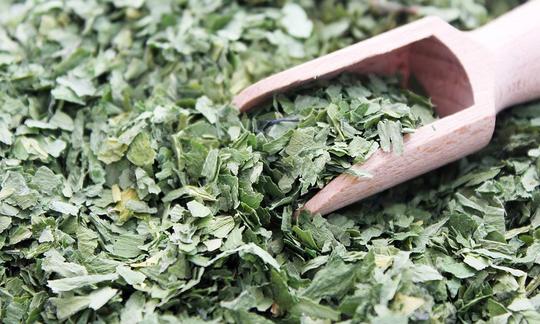

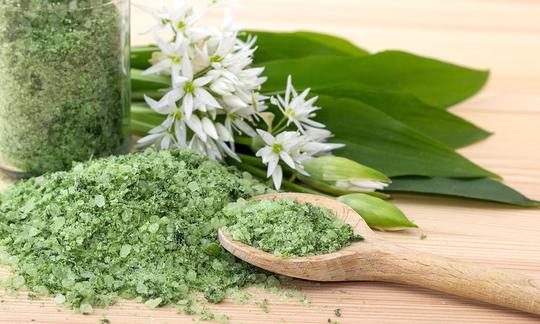

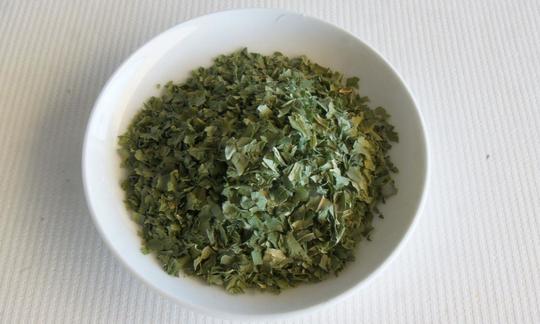

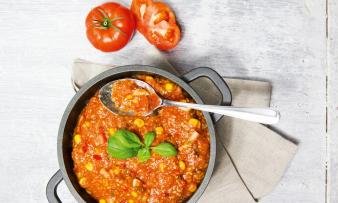
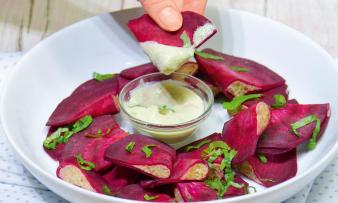





Comments